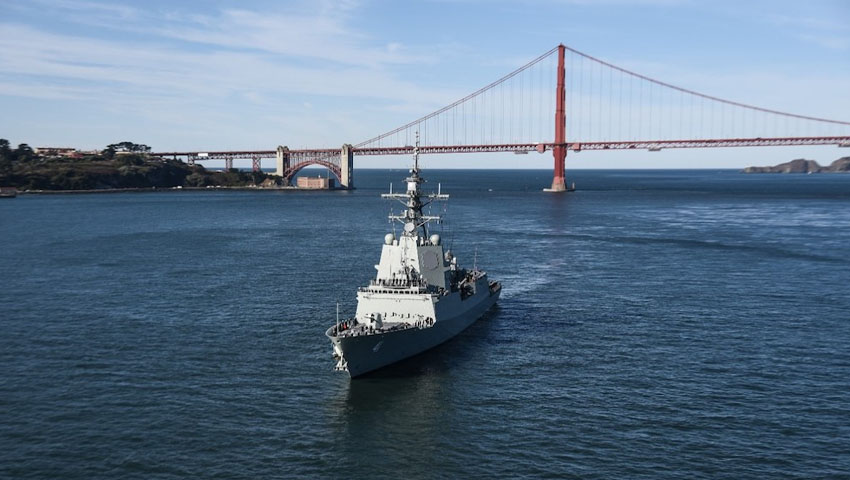Navantia Australia employees sailed with the Royal Australian Navy’s newest destroyer, HMAS Brisbane, as part of risk mitigation support to the ship’s company during her US combat system ship qualification trials (CSSQTs).
To continue reading the rest of this article, please log in.
Create free account to get unlimited news articles and more!
Navantia Australia’s Adrian Orellana and Jose Luis Bouza Fernandez joined HMAS Brisbane at San Diego Naval Base in California, US.
As part of CSSQTs, HMAS Brisbane conducted live fire engagements of a number of airborne, naval and ground threats. Using remote sensor data from the USS Stockdale and the Cooperative Engagement Capability, the combat system was tested against a range of challenging targets and tactical situations. This was a first for both the Royal Australian Navy and the US Navy.
The DDG Enterprise Systems Program Office (SPO) utilised the expertise of Orellana and Bouza well during their time aboard. Orellana commented that being able to articulate and document problems in real time to the SPO reduced downtime and improved the response times for addressing the issues.
“It was a great experience to be able to understand processes and problems in the environment of the customer,” remarked Orellana.
“Having have subject matter experts (SMEs) in the IPMS and platform onboard during trials, I believe, gives the MEO and other officers more confidence in using the platform, reduces downtime for troubleshooting and triage of maintenance issues.”
The CSSQT trials mark the next step in the Hobart Class destroyer’s introduction into service. Brisbane successfully completed seaworthy assurance trials (SWATS) in March this year.
HMAS Brisbane (III) is the second of three ships of the Hobart Class guided missile destroyers. Her sister ships are HMAS Hobart (III) and NUSHIP Sydney (V).
The keel of Brisbane was laid-down on 3 February 2014 and was launched by Robyn Shackleton on 15 December 2016. HMAS Brisbane commissioned on 27 October 2018.
The Hobart Class' Spanish counterparts entered service with the Spanish Navy beginning in the early 2000s, working alongside key NATO and US maritime assets.
When deployed to the Persian Gulf, the F100s became the first foreign Aegis-equipped ships to fully integrate into a US Navy Carrier Strike Group, while the class has also successfully deployed as the flagship of NATO's Maritime Group Standing Reaction Force, highlighting the individual and interoperable capabilities of Navy's new destroyers.
The vessels will be capable across the full spectrum of joint maritime operations, from area air defence and escort duties, right through to peacetime national tasking and diplomatic missions.
The Hobart Class combat system is built around the Aegis Weapon System. Incorporating the state-of-the-art phased array radar, AN/SPY 1D(V), will provide an advanced air defence system capable of engaging enemy aircraft and missiles at ranges in excess of 150 kilometres.
While based upon the Spanish F100s, the Australian vessels incorporate a number of modifications and Australian-specific structural/design and combat system modifications to provide a uniquely Australian surface combatant with international provenance.
HMAS Brisbane returned to Australia from the United States in mid-December 2019.
Stephen Kuper
Steve has an extensive career across government, defence industry and advocacy, having previously worked for cabinet ministers at both Federal and State levels.

 Login
Login








